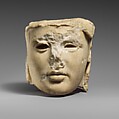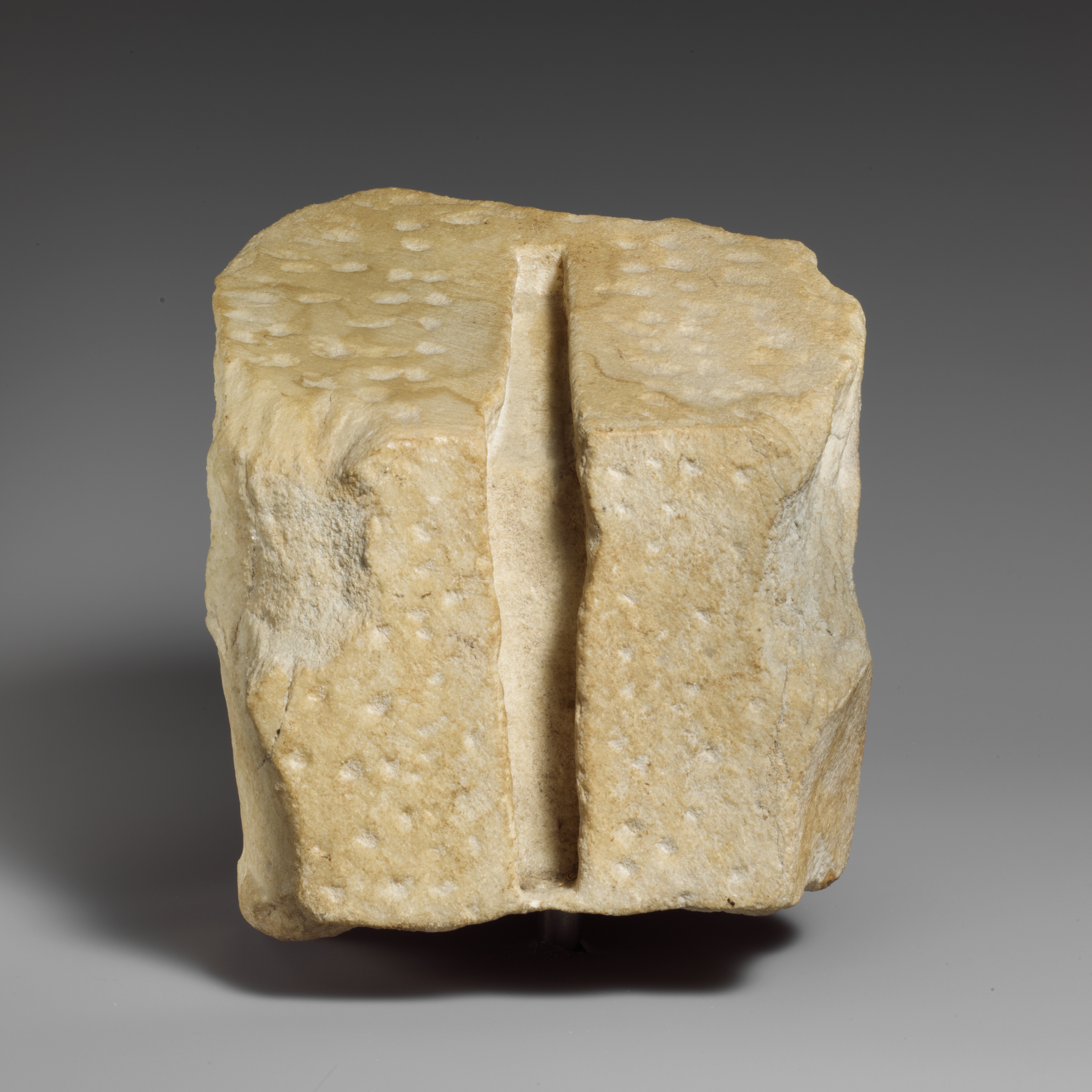Marble head of Athena: The so-called Athena Medici
Copy of a Greek statue of ca. 430 B.C. attributed to Pheidias
This head is from a fine Roman copy of an over-life-sized statue of the goddess Athena which has long been attributed to Pheidias, the most famous artist of that period. The eyes were once inset with colored stones. The head retains part of the frontlet and neck guard of an Attic helmet that was originally completed in wood and gilded. This combination of marble and wood, whereby the drapery and attributes such as the helmet were worked in wood and gilded while the flesh parts were carved in marble, is known as the acrolithic technique. It imitated the appearance of immensely valuable gold and ivory statues, such as the great Athena Parthenos that stood inside the Parthenon in Athens and the colossal seated statue of Zeus at Olympia.
Due to rights restrictions, this image cannot be enlarged, viewed at full screen, or downloaded.
This artwork is meant to be viewed from right to left. Scroll left to view more.







